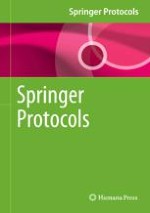
2015 | Online First | Buchkapitel
Primers for dsr Genes and Most Probable Number Method for Detection of Sulfate-Reducing Bacteria in Oil Reservoirs
verfasst von : Yin Shen, Gerrit Voordouw
Erschienen in: Springer Protocols Handbooks
Verlag: Springer Berlin Heidelberg
Aktivieren Sie unsere intelligente Suche, um passende Fachinhalte oder Patente zu finden.
Wählen Sie Textabschnitte aus um mit Künstlicher Intelligenz passenden Patente zu finden. powered by
Markieren Sie Textabschnitte, um KI-gestützt weitere passende Inhalte zu finden. powered by